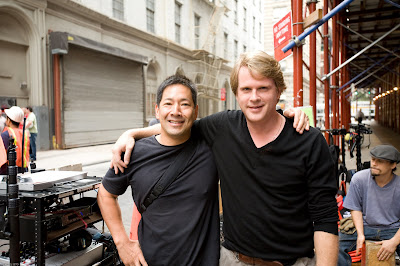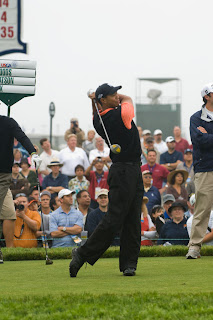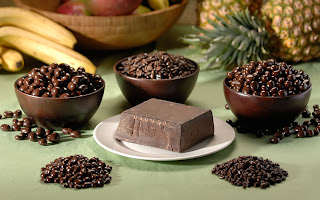


**Click to enlarge any of these images.
Images © Copyright 2008 Michael Seto
Top photo: The 20-foot ceiling precluded bounced flash, so I used the Demb Flip-it (see below) to give me nice even lighting off an SB-800.
Middle: Chinese Premier Wen Jiabao speaking at the Waldorf-Astoria during a lunch sponsored by the National Committee on US China Relations, Sept 23, 2008.
Bottom: Dr. Henry Kissinger introduces the Chinese Premier.
New York City
September 2008
My client called, "I'll need your social security number and date of birth."
"Oh, what for?"
"A Secret Service background check."
I was silent for a moment, "Oh my..."
The National Committee on US-China Relations (ncuscr.org) hired me to photograph a luncheon they sponsored honoring the Premier of China, Wen Jiabao, who is the equivalent of the US Speaker of the House, third in line in Chinese politics. The luncheon would take place at the Waldorf-Astoria in midtown Manhattan.
Cirque de UNGA
It was one of the events in the week-long UN General Assembly. A real circus and pain in the neck if you life anywhere near the UN. Traffic barricades and motorcades abound.
Working with heads of state can be exhilarating as well as daunting. Their schedules are planned to the minute, protocol, assistants, and of course security surround the dignitary. It's a zoo. With literally dozens of moving parts - the photographer falls pretty low on the totem pole. In this instance, the NCUSCR did a fantastic job of coordinating with me and the other photographer ahead of time; they asked for our input for the reception and VIP greeting area.
The Chinese Premier would be greeted by NY Governor Patterson, Secretary of Labor Elaine Chao, Ambassador Carla Hills, and Dan Brown, CEO of Motorola. Then he'd meet 30 plus VIP dignitaries, including Dr. Henry Kissinger and Ambassador Madeline Albright. My job...get perfect photos of each person meeting the Premier.
The Gear - Go Wide Young Man
For something like this, a suit and tie is mandatory, no ball cap and jeans thank you. A professional photographer needs to maintain the proper decorum and you're representing your client so make them look good.
My primary camera was the D700 with MB-D10 grip and Nikon's 17-35mm f2.8. You want wide on these types of shoots since space tends to be confined, you will be close to your subjects and people will be moving in and out of frame. This is the key PJ lens that you can't live without. Most of the shots will be at 24-35mm and you will inevitably get a lot of fluff on the sides of the frame. Fortunately, with 12 MP you can crop out a lot and still have enough pixel density for a great image.
The high ISO capability of the D700 (and D3) is unsurpassed and gives you maximum flexibility for shots with or without flash. I chose flash here, mounting a SB-800 with a Demb Flip-it (www.dembflashproducts.com/flipit/) and connected to a Quantum Turbo battery for fast recycle. No Stroboframe here - too unwieldy. These photos are not fine art, they're PJ so blast away.
I set my camera for 2000 ISO, -1 2/3 stop on TTL on the -800, a shutter speed of 1/60 (I wanted some ambient), and f8. Yep, like they say, "f8 and be there." While f8 demands more of the flash, it gives plenty of depth of field so you get some latitude on the focus in these fast moving situations. (At 5' distant, f8, 35mm, you get 3' of DOF, 1' in front, 2' behind. Plenty.)
I carried everything in a Domke J-3. This is a compact journalist bag, in black it looks small and professional, yet holds everything you need comfortably. No backpacks for this type of gig.
Kit: D700 w/grip. D2x. 70-200 VR, 17-35, 50 1.4. 2 x SB-800, 1 Quantum Turbo, assorted cards, batteries, lens cleaner, etc.
The Scrum
Fortunately there were only four of us working the greeting area, me and my partner, a photographer for the Chinese delegation, and a shooter for Secretary Chao. So we just lined up off to one side. Try to play nice with other photogs, introduce yourself, understand what they're there for and you can help each other out - like making room for a shot for each other. Yes, it can be win-win.
The problem was the two translators, two VIP greeters and a couple other assistants that kept getting in the shot - either in the background, or cutting in our line. The key here is you need to be assertive. A shrinking violet photog will not get the shot needed. Just tap the offender on the shoulder and ask them to move (in Chinese if possible).
Some dignitaries will know what they're doing, some won't. A good photographer will figure out which one they are and quickly intervene if necessary, placing people in their spots and telling them where to look. Take charge as required but lay back if not. Remember, we're not the show, we just capture it; but woe betided you if you don't...
Find A Unique Angle
The luncheon speech was standard podium shooting. I shoot manual for fixed situations like this. A black background can often fool the meter so I spot meter the face, and then tweak it till I'm happy. Shooting one particular setting also makes it easier to make batch adjustments if required in post (and yes, I only shoot RAW). These photos were at ISO 2000, f4, 1/100; I didn't mind shooting at 1/100 since I was using the VR while hand holding.
Then one of the PR guys suggested I go up with the rest of the pool photogs...what?! Screw that, I thought, I'm the official photog with full floor access. But, I reconsidered, maybe I'll get a different shot up on the balcony, and I did. So instead of the mic and face photo, I got a couple decent stage setting (pardon the pun) images. See, sometimes the PR folks do know what they're talking about and have the photographer's best interests in mind.
Good luck and good shooting!

















